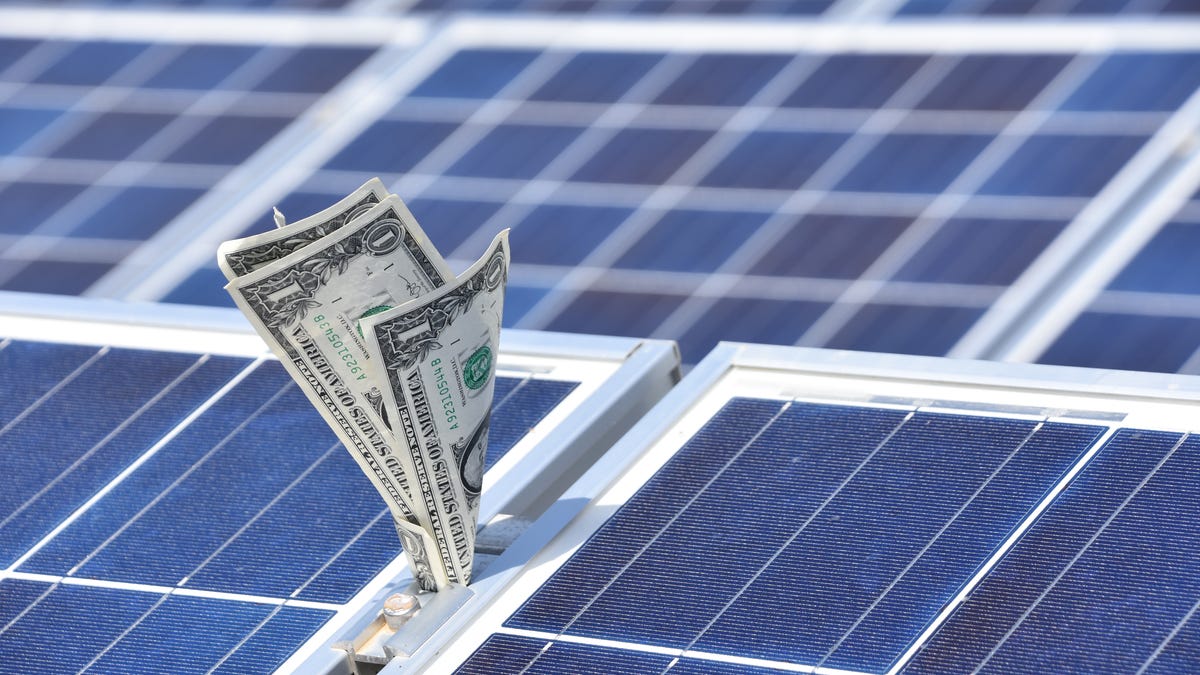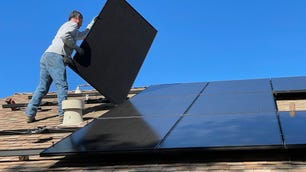
Installing solar panels on your roof and hooking them up to the grid or your home electrical system involves lots of hardware, but much of the expense of a typical residential installation comes from “soft” costs.
This is why it’s so important to do a bit of research on local solar installers and get multiple quotes before signing up for a home installation. There’s plenty of different solar panels out there, but they’re essentially a commodity at this point. The real difference in the experience you have with your solar installation, and how much you pay for it, can be heavily influenced by the soft costs involved.
To bring these invisible costs to light, we’ve compiled a quick guide breaking down the major soft costs of solar and going over a few strategies for mitigating them.
Can solar panels save you money?
Interested in understanding the impact solar can have on your home? Enter some basic information below, and we’ll instantly provide a free estimate of your energy savings.
What are solar panel soft costs?
As of 2021, 65% of the total cost of a solar installation can typically be attributed to soft costs, according to the National Renewable Energy Laboratory. Soft costs include expenses of a solar company’s sales and marketing, labor, overhead, permitting and supply chain.
A recent Wood Mackenzie report finds that at the beginning of 2023, the average cost of a residential solar installation in the US was $3.28 per watt. Here’s a look at average costs by state, according to data from FindEnergy.com.
Of that, nearly $2 per watt goes to soft costs. The biggest chunk of soft costs goes to customer acquisition, otherwise known as sales and marketing, along with overhead and profit. Together, these combine for about 40% of the cost of a residential installation.
Here’s a closer look at the different soft costs that end up adding thousands of dollars to the cost of each installation.
Sales and marketing
Called “customer acquisition and origination” in the industry, this is a bigger soft cost in the residential than commercial market, where projects tend to be fewer but much larger.
“There is a markup, but for the industry to flourish there has to be money in it,” Garrett Mendelsohn, CEO of Solar Bootcamp, told me. His company trains solar salespeople and others interested in the industry.
“It’s a really hard industry to be in,” said Mendelsohn, adding that installers can find themselves waiting up to eight months to get paid. “In order for that to make sense you need to be making a decent sized commission.”
Jigar Shah, director of the Department of Energy’s Loan Programs Office, says lowering soft costs is something the DOE has been working on for a while. He says the biggest opportunity to save on soft costs is in customer acquisition.
“I think we’re moving away from a model where customers get a piece of mail every day trying to convince them to go solar, and you’re looking at more of these ‘solarize’ campaigns where you’re trying to convince the mayor or the city council member or the neighborhood association,” Shah said.
For many homeowners, it’s all about finding an installer they can trust.
“We’re hitting the point where the folks who are motivated to go solar because of aggressive sales tactics have already done that and now we have folks who want to go through a trusted resource,” Shah said.
The notion of paying a relatively steep markup is one reason to consider going the DIY route for your solar system. Just be sure you’ve considered all the pros and cons first.
Labor and installation costs
Labor and installation costs amount for only 7% of the cost of a residential installation, according to the Department of Energy. This might seem low, but professional installers have streamlined the installation process and are usually able to knock it out in a day or two with a small crew.
Depending on the size and complexity of your system, labor probably adds several hundred to several thousand dollars to the final installation bill.
Permits and paperwork
Getting your solar project permitted before work is started and inspected after it’s installed and obtaining permission to operate from your local utility can add significant time and expense to an installation. This process often takes three weeks to three months. This part of the installation process can take anywhere from three to 11 weeks.
Permits and inspections are generally overseen by local governments or regulatory agencies, but the process is coordinated on your behalf by your installer in most cases. This costs just as much (if not a little more) as the installation labor itself. This doesn’t even account for the time spent waiting around for the right officials to sign the needed documents for your project to move forward.
Supply chain costs
Just being able to get ahold of all the needed equipment to complete an installation on time can drive the price of a project up by around 10%. This issue worsened in the post-COVID era of snarled supply chains. In recent years, often the only way to get what you need when you need it is to pay a premium.
Other potential costs
Unfortunately, the total price tag for installing and operating your solar system can go beyond what we’ve outlined so far.
Mendelsohn says dealer fees can be as high as 40 percent or greater when financing a system.
“So if the cash price is $100,000, the financed price is $140,000.”
Other ongoing considerations for the life of your system include things like maintenance, cleaning and repairs or upgrades.
Maintenance
When installed correctly, solar panels are designed to last for 20 to 30 years with minimal upkeep. As a result, there’s not much to worry about in terms of regular maintenance.
However, you will need to keep a close eye on the physical condition of your system, making sure your panels are clean and free from debris. If your panels are dirty, you can let the rain wash them naturally or rinse them off yourself (from the ground).
You should also watch your system’s energy production levels to monitor for any issues. Often, reduced power output is caused by short-term issues like rain or clouds blocking your solar panels. But if these problems are occurring for an extended period of time, it could signal a problem with your panels.
Most solar system warranties include a performance guarantee. So if you’re still under warranty, you shouldn’t have to pay to get your panels fixed if they aren’t generating as much power as they should (more on that in the next section).
If you do need to pay someone to come do some basic maintenance, like cleaning your panels (and they aren’t too hard or dangerous to access), the job should be easy for a professional to do in a few hours for a few hundred dollars or less. If the issue can’t be resolved this way, it probably signals a need for more involved repairs or replacement.
Repairs and replacement
It’s unlikely, but in some cases, you might need to have your solar panels repaired or replaced. There are several reasons this could happen, but the most likely would be damage caused by extreme weather, such as hail, lightning or fallen trees. Defective panels could also be to blame.
Most solar panel product warranties are valid for 10 to 25 years after installation, so if you’re still within that period, your manufacturer should cover the cost of repairs from accidental damage or defective goods. However, labor and shipping costs aren’t always included in a product warranty. And if your warranty has ended, you may need to pay for your system repairs out of pocket.
But one broken panel doesn’t necessarily mean you need to overhaul your entire system. Even if one or two panels aren’t working, it’s likely that your overall system will continue producing power. However, you should contact your solar company about a replacement panel as soon as possible.
How to mitigate unexpected expenses
You can’t predict when a storm or accident might cause damage to your solar panels. However, there are preventative measures you can take to minimize the risk of expensive repairs in the future.
At a minimum, you should check the condition of your solar system at least once per week. You don’t have to get onto the roof and inspect the panels, but you should walk around your property and make sure that your panels are clean, free of cracks and not completely shaded. Any damage should be reported to your solar provider to prevent more serious long-term issues.
If you notice any animals around your system, ask your solar installer about adding a critter guard. Wildlife can make a home underneath your panels, potentially resulting in costly repairs for chewed wires and panel damage (as well as pest control). Critter guards also reduce fire risks by preventing debris from gathering underneath your panels.
Be sure to monitor how much energy your system is generating each week, too. If you observe any significant changes, there may be something wrong with your solar panels, inverter or solar battery (if you have one). Contact your solar provider to troubleshoot and identify solutions.
Frequently asked questions
How much does solar panel maintenance cost?
Solar maintenance is typically minimal and may even be covered under warranty. If not, a professional or handy person may be able to clean and check your panels for a few hours, labor fee.
How much do solar panels cost?
Panels by themselves, not accounting for the cost of installation or related expenses, run between 80 cents and $1.80 per watt, on average.
How long does it take to install solar panels?
The installation process of the solar equipment itself usually takes just a few days. The entire process of design, permitting, installation, inspection and getting permission to operate can take several months.

